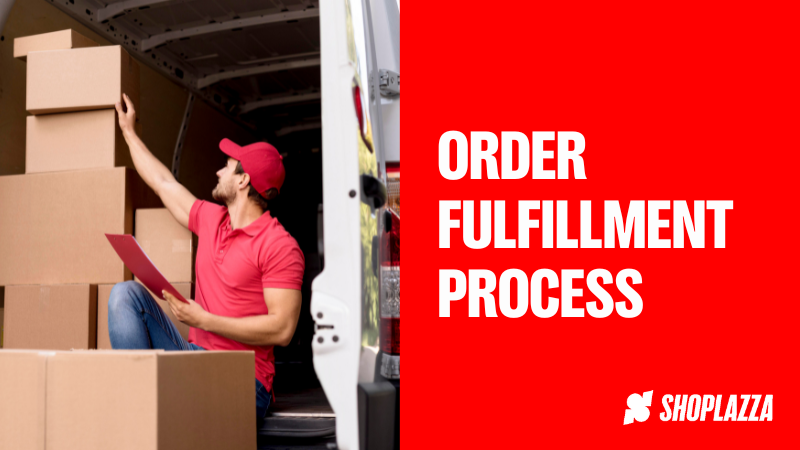
Customer testimonials are essential to make potential customers trust your business! That's how they can see if your clients are having great experiences buying your products or services.
In the competitive world of ecommerce, building trust and credibility is crucial for attracting and converting potential customers. With numerous options available to consumers and because they can’t try the products before purchasing them, they often turn to the experiences and opinions of others to inform their purchasing decisions.
This is where customer testimonials come into play. Customer testimonials, in the form of written or spoken statements, provide a powerful tool for businesses to showcase positive experiences, build trust, and influence potential customers.
In this era of digital communication, client testimonials have become an increasingly valuable asset for online stores. They act as social proof, offering real-life client testimonial examples of satisfied customers who have experienced the benefits of a product or service.
These testimonials help the target audience gauge the quality, reliability, and effectiveness of what a business offers. You must apply it to your ecommerce business if you want another way to increase your conversion rates. Let’s see if it applies to you.
What is a customer testimonial?
A customer testimonial is a written or spoken statement from a customer expressing their satisfaction, experience, or opinion about a product, service, or brand. It serves as a form of social proof, providing feedback and endorsement that helps build credibility and trust for businesses.
Customer testimonials are often used in marketing and advertising materials to showcase positive experiences and encourage your target audience to purchase or engage with a company. Testimonials typically highlight the benefits, features, or specific aspects of a product or service that the customer found valuable or helpful.
A customer testimonial may include details about how the product solved a problem for existing customers, improved their life or business, or exceeded their expectations. Positive customer testimonials can take various forms, such as blog post testimonials, a customer testimonial video, social media testimonials, online reviews, case studies, or even influencer marketing (like influencer testimonials) in different formats and platforms, or your own dedicated testimonial pages.
Overall, customer testimonials play a significant role in influencing buying decisions and building a favorable reputation for businesses by showcasing real experiences and positive feedback from existing customers.
Why display customer testimonials?
Displaying customer testimonials on your ecommerce store can bring several benefits and positively impact your business. That’s why we prepared a list with many reasons why a customer testimonial can bring to your store and why it's beneficial to showcase customer testimonials on your website or on a specific testimonials page.
Build trust
Customer testimonials act as social proof and help build trust among prospective customers. When they see positive feedback from a happy customer, it instills confidence in your product or service.
People want to see a real person, so sharing a real customer happy story is mandatory.
Increase credibility
A great testimonial provides third-party validation for your business. When customers see that others have had positive experiences with your products or services, it enhances your credibility and establishes you as a reliable and trustworthy brand. Credibility is something that prospective clients always look at when trying to decide whether they should purchase and item or not.
Influence purchase decisions
Convince prospective customers is a task for every business. They often rely on the experiences and opinions of current customers to inform their buying decisions. By showcasing testimonials, you can influence their perception and encourage them to purchase. A good testimonial highlighting specific benefits or results can be particularly persuasive, making previous customers exchange information with newer ones.
Address concerns and overcome objections
Prospective customers are always looking to heal a pain point while using some product, so your testimonials can be used as a tool to show them that your brand is capable of offering what they want.
Testimonials help address common concerns or objections that prospective customers may have. If a testimonial addresses a specific issue or problem and explains how your product or service resolved it, it can help alleviate doubts and increase confidence in purchasing.
Showcase different use cases
A customer story is something important to highlight your products. New customers are willing to see what your brand did to help past customers on their issues and your own testimonials page is a key to showcase your brand’s attributes.
Testimonials can still demonstrate the versatility of your products or services by showcasing various use cases. This allows new customers to see how your offerings can meet their specific needs, increasing the likelihood of conversion.
Improve SEO and search rankings
Including customer testimonials on your ecommerce store can provide fresh and relevant content. This can improve your search engine optimization (SEO) efforts by increasing the amount of user-generated content on your site, which can positively impact your search rankings.
Talking about user-generated content, there are many platforms that can help customers to spread their opinions, so look to see if someone left social media testimonials by searching for your brand’s name so that you can showcase different sides of your business to your willing customers with glowing testimonials and third-party reviews.
Differentiate from competitors
Customer testimonials can set you apart from competitors by highlighting the unique value and positive experiences customers have had with your brand. This differentiation can help you stand out in a crowded market and attract more customers.
For example, if your dealing with your Facebook reviews differently than your competitors, an existing customer will notice your business commitment to your target audience by simply entering your review page.
But, remember, when you show customer testimonials, you can use a variety of formats, such as interview testimonials, authority testimonials, or blog post reviews. If you’re looking for customer interview testimonials, ensure your testimonial videos are authentic and come from real customers to maintain credibility.
Types of customer testimonials
Written testimonials
These are test-based testimonials where customers provide feedback in written form. Some types of written testimonials are press review testimonials, quote testimonials and social testimonials.
Various online shoppers use customer success stories in their marketing strategy, and as an example, we brought Airbnb, a company that works on short-term rentals.

Airbnb features written testimonials from hosts and guests on its website, highlighting positive experiences, unique stays, and the value of its platform. Their evaluation can grade different features such as communication with landlords, cleanliness and value.
Video testimonials
Video testimonials add a personal touch and allow customers to share their experiences verbally. They can feature customers in a more organic way—like social testimonials—or be professionally produced.
For example, brands can leverage testimonial videos made by a customer whose reviews make up on the internet, or send emails to loyal customers to ask them if they want to be featured on a testimonial video, highlighting their experience with your business.
We brought HubSpot as an example of a website that features video testimonials, so it can inspire you to make your own testimonial video.
HubSpot incorporates video testimonials from their customers on their website and has various releases of video testimonials on their YouTube account, where they share how HubSpot's marketing and sales tools have helped their businesses grow.
Case studies
Case studies provide in-depth narratives about specific customer experience, often highlighting their challenges and how a product or service provided a solution. For instance, Shoplazza is an example of a company that uses case studies to promote their solutions.

In this case, we’re presenting a case study that delves into how our ecommerce software has helped Creality, one of our e-business partners to streamline processes, improve customer relationships, drive growth and increase sales revenue!
Ratings and Reviews
Ratings and reviews allow customers to provide feedback and rate products or services. They are often displayed alongside testimonials or as standalone sections on websites. If you’re looking to buy or sell with Amazon, you should be aware that the platform enables customers to leave reviews and grade services.
As you can see, Amazon features customer ratings and reviews for a wide range of products, enabling shoppers to make informed purchasing decisions based on other customers' experiences.

This example demonstrates how different customer testimonials can be effectively implemented on websites to showcase positive experiences and influence the target audience. As you see, every comment can be seen, meaning that you have to pay attention to customers' concerns and improve your customer service.
Getting testimonials from existing customers
Okay, you already know how to leverage customer testimonials as a marketing material, but how to make them engage in writing reviews and testimonials? 🤔
If you follow the steps below, we’re sure that you’re going to succeed on it.
1. Identify a satisfied customer: Identify users that expressed customer loyalty, or have had successful experiences with your product or service. Look for customers who have provided positive reviews, and feedback, or have engaged positively with your brand.
2. Reach out to customers: Contact these satisfied customers personally via email, phone, or even social media. Express your appreciation for their support and ask if they would be willing to provide a testimonial or share their experience with your product or service. Make the process easy for them by providing clear instructions and any necessary templates or forms.
3. Provide guidelines: Before feature testimonials, you should offer guidelines or questions to help customers structure their testimonials and serve as client testimonial examples. For instance, you can ask them to describe their initial problem or need, how your product or service addressed it, and the specific benefits or results they experienced. Make sure the guidelines are flexible enough to allow customers to share their unique experiences and strict enough to make them share effective testimonials.
4. Offer incentives: While only sometimes necessary, you can consider offering incentives to encourage users to share their customer stories. This could be in the form of discounts, exclusive offers, or small gifts as a token of appreciation. They’re helping you to produce marketing materials, so why not show your gratitude? However, ensure that any incentives align with ethical practices and comply with relevant regulations.
5. Collect testimonials: Once customers have agreed to provide testimonials, give them the flexibility to choose their preferred format. They can write a testimonial, record a video testimonial, or share their feedback in any other format they find comfortable. Be open to different forms of testimonials to accommodate diverse customer preferences. You can even ask them to be a part of customer interviews testimonials.
6. Ensure authenticity: It's important to maintain authenticity in your testimonials. Encourage customers to provide their real names, photos, and any relevant information that adds credibility. Authentic and transparent testimonials are more likely to resonate with your target audience.
7. Showcase testimonials: Once you have collected enough testimonials, display them prominently on your ecommerce store, website, or in marketing materials such as a blog post. Choose a variety of testimonials that highlight different aspects of your product or service and cater to various customer personas. Update and refresh testimonials periodically to keep the content relevant and make sure you have permission to use your customers’ information.
8. Monitor and Respond: The last step is continuous and you should always keep it in mind. You'll need to keep an eye on customer feedback and reviews to find new opportunities for testimonials. Answer customer testimonials, whether positive or negative, promptly and professionally to show your commitment to customer satisfaction.
Remember, the key to a successful testimonial strategy is building strong customer relationships, providing exceptional experiences, and consistently delivering value. This, in turn, will increase the likelihood of receiving positive testimonials that can benefit your business. 😉
Customer testimonials: conclusion

In conclusion, customer testimonials are crucial in building trust and credibility, and influencing purchase decisions for your ecommerce store!
By showcasing customer stories and experiences from happy customers, you can enhance your brand's reputation and differentiate yourself from competitors.
Implementing a well-defined testimonial strategy involves identifying a happy customer, reaching out personally, providing guidelines, and collecting testimonials in various formats. Remember, not every testimonial should be displayed on your product pages. Make sure to select honest opinions from a previous customer that showcase a success story so that you can use them as marketing material and to help your sales team.
Authenticity and transparency are paramount to great testimonials, so invite customers to provide real names, photos, and relevant details. Express gratitude for customer engagement and seek permission before featuring testimonials.
By regularly monitoring customer feedback and responding promptly to demonstrate your commitment to customer satisfaction, we’re sure your social media channels will be filled with happy customers talking about your business.



